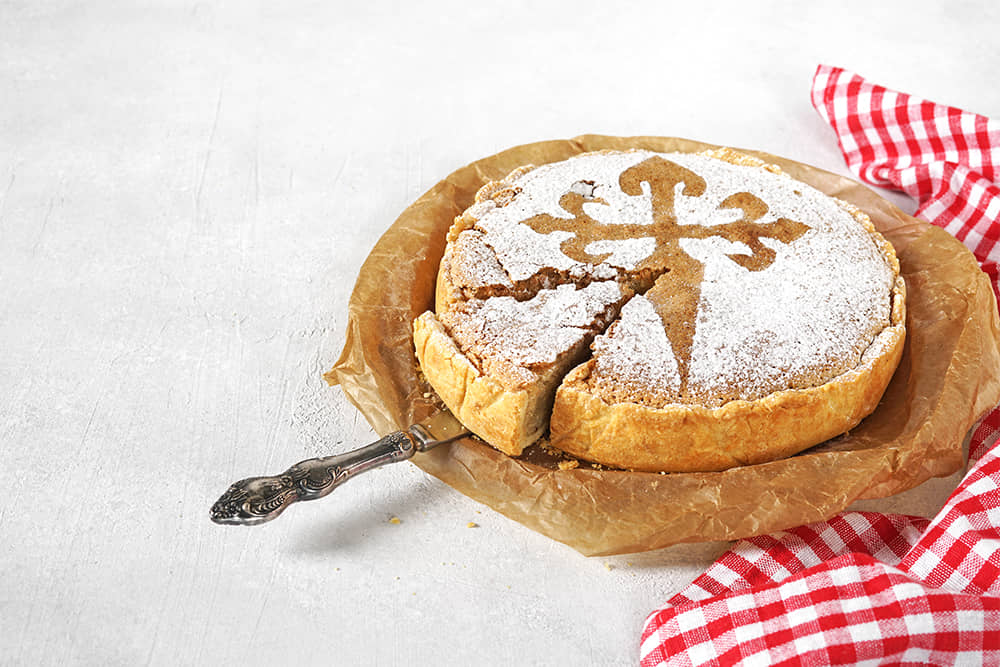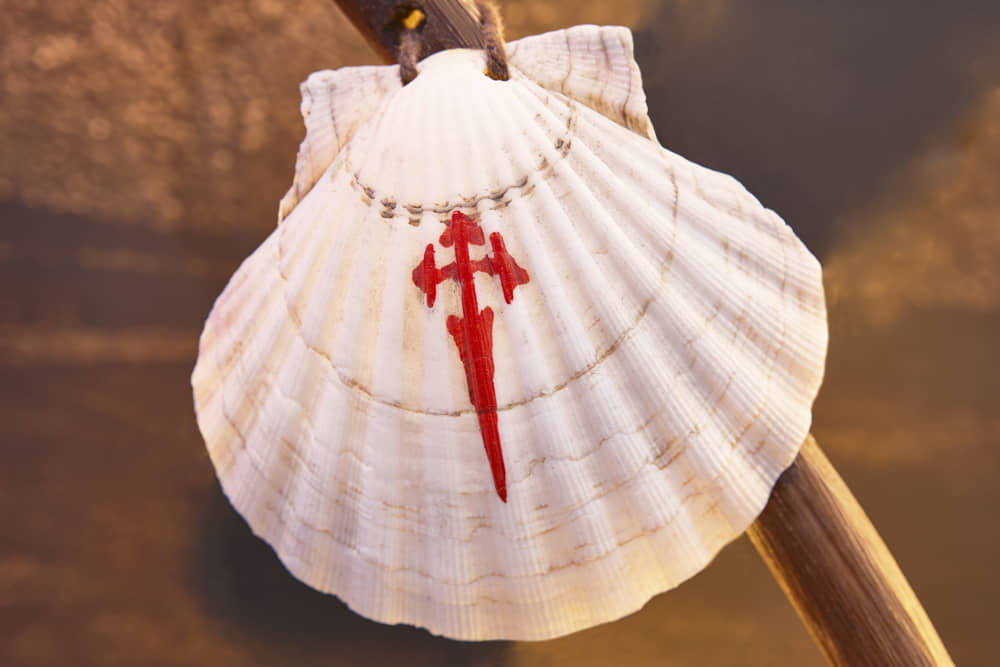The Camino de Santiago is one of the most emblematic pilgrimage routes in the world, full of symbols that connect pilgrims with Galician history, faith and culture. One of the best known is the Cross of Santiago, an insignia half cross, half sword of a vibrant red color and that has a story you should know. Its origin is not entirely clear and, in fact, there are different versions that try to explain how it came about. The first account dates back to the Battle of Clavijo in the year 844.
Legend has it that, during this confrontation between Christians and Muslims, the Apostle St. James miraculously appeared on the back of a white horse, carrying a flag with the red cross.
This event is considered by some to be a turning point in the Christian victory and consolidated the connection between Santiago and the cross that bears his name. Another theory goes back to the Crusades, where Christian knights carried crosses with a sharp end.
These, which could be driven into the ground, served both to mark their presence and to pray during their campaigns.
Over the centuries, the cross evolved to become the symbol of the Military Order of Santiago, founded in 1170, with the mission of protecting pilgrims on their way to the tomb of the Apostle St. James.
Its members wore the Cross of Santiago on their white cloaks in honor of the feat performed by Santiago el Mayor during the Battle of Clavijo.
The symbolism of the Cross of Santiago
The Cross of Santiago is a Latin cross that, due to its shape, resembles a sword, which underlines its significance as a representative of the defense of the Christian faith.
Its short handle and pointed end reinforce this warlike image. The arms of the cross end in a fleur-de-lis, a symbol of purity and honor associated with both the Apostle St. James and the Holy Trinity.
This flower, with its three petals, also represents obedience and submission to the divine commandments. Its red color symbolizes the blood shed by Santiago as a Christian martyr when he was executed.
This intense tone reinforces the image of the cross as an emblem of sacrifice and struggle in the name of faith.
The cross in culture and tradition
From its origins to the present day, the Cross of Santiago has become an omnipresent element in Galician culture and in the iconography of the Camino de Santiago.
It can be seen represented in a variety of objects and places, from official coats of arms to typical products of the region.
One of the most recognizable examples is the Santiago cake, a sweet made of almonds with the cross decorated on its surface with powdered sugar.  In addition, this symbol is present in the coat of arms of the city of Santiago de Compostela, accompanied by the image of the tomb of the Apostle.
In addition, this symbol is present in the coat of arms of the city of Santiago de Compostela, accompanied by the image of the tomb of the Apostle.
Soccer teams such as Celta de Vigo or Sociedad Deportiva Compostela have adopted the cross and have integrated it into their respective shields.
It has even left its mark on art.
A well-known example is the inclusion of the Cross of Santiago on the chest of Velázquez in his masterpiece ‘Las Meninas’, added to commemorate his appointment as a knight of the Order of Santiago.
A living symbol of the Camino
Today, the Cross of Santiago remains a powerful symbol for pilgrims who walk the Camino de Santiago.
It appears on signage, souvenirs and often on tattoos that pilgrims get at the end of their journey as a permanent reminder of their experience.
This emblem occupies a central place in Galician culture and Christian faith and continues to be closely linked to the pilgrimages made by thousands of people each year.






0 Comments